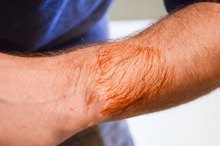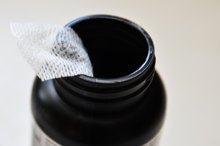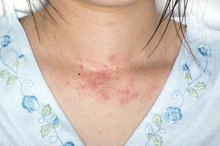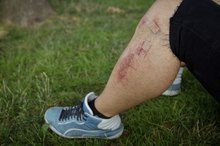What does fact checked mean?
At Healthfully, we strive to deliver objective content that is accurate and up-to-date. Our team periodically reviews articles in order to ensure content quality. The sources cited below consist of evidence from peer-reviewed journals, prominent medical organizations, academic associations, and government data.
The information contained on this site is for informational purposes only, and should not be used as a substitute for the advice of a professional health care provider. Please check with the appropriate physician regarding health questions and concerns. Although we strive to deliver accurate and up-to-date information, no guarantee to that effect is made.
How to Apply Steri Strips
Steri-Strips are adhesive skin closures used to close shallow lacerations or surgical incisions 1. Steri-Strips can be used alone or with sutures and staples. These adhesives are hypoallergenic and there is less chance for infection and scarring than with staples and sutures. Treating lacerations with Steri-Strips is fast and convenient, but you should never treat a laceration that is deep, infected, has jagged edges or has dirt in it that will not come out. If you have any of these complications contact your doctor to be treated.
Clean and dry at least two inches of skin around the wound for good adhesion. Compound Benzoin Tincture may be applied to enhance adhesion.
How to Take Care of Steri Strips
Learn More
Open the package. Remove the Steri-Strip card and card end tab.
Grasp the end of a Steri-Strip and lift it upward from card.
How to Use a Tegaderm
Learn More
Use your fingers to push the wound edges together and place the Steri-Strip across the wound. Press firmly in place.
Add more Steri-Strips across the wound until the wound is closed. The strips should be placed approximately one-eighth of an inch apart.
Align additional strips parallel to the wound, approximately one-half of an inch from strip ends, to prevent premature lifting.
Tips
Skin should be free of oil and moisture to ensure good adhesion. Do not pull skin too tight when applying Steri-Strips. This can cause your skin to blister or loss of adhesion of the strips.
Warnings
Be careful when removing Steri-Strips. They may cause your skin to strip, or come off, when removed.
Related Articles
References
- 3M: Steri-Strip: Skin Closures
- Family Doctor: First Aid: Cuts, Scraps and Stitches
- Esmailian M, Azizkhani R, Jangjoo A, Nasr M, Nemati S. Comparison of Wound Tape and Suture Wounds on Traumatic Wounds' Scar. Adv Biomed Res. 2018;7:49. doi:10.4103/abr.abr_148_16
- Cleveland Clinic. Incision Care Procedure Details. Updated April 14, 2015.
- Shanmugam VK, Fernandez SJ, Evans KK, et al. Postoperative wound dehiscence: Predictors and associations. Wound Repair Regen. 2015;23(2):184-190. doi:10.1111/wrr.12268
- Brunicardi, F. Charles, et al. Schwartz's Principles of Surgery. McGraw-Hill Education, 2014.
Tips
- Skin should be free of oil and moisture to ensure good adhesion.
- Do not pull skin too tight when applying Steri-Strips. This can cause your skin to blister or loss of adhesion of the strips.
Warnings
- Be careful when removing Steri-Strips. They may cause your skin to strip, or come off, when removed.
Writer Bio
Temesha Aldridge started writing professionally in 2010. She is a medical transcriptionist who has written hundreds of clinical and surgical reports. Her knowledge in areas of health comes from writing medical reports for physicians as well as experiences gained from time spent as a medical specialist in the U.S. Army. Aldridge holds a certificate in medical transcription from Everett Community College.








